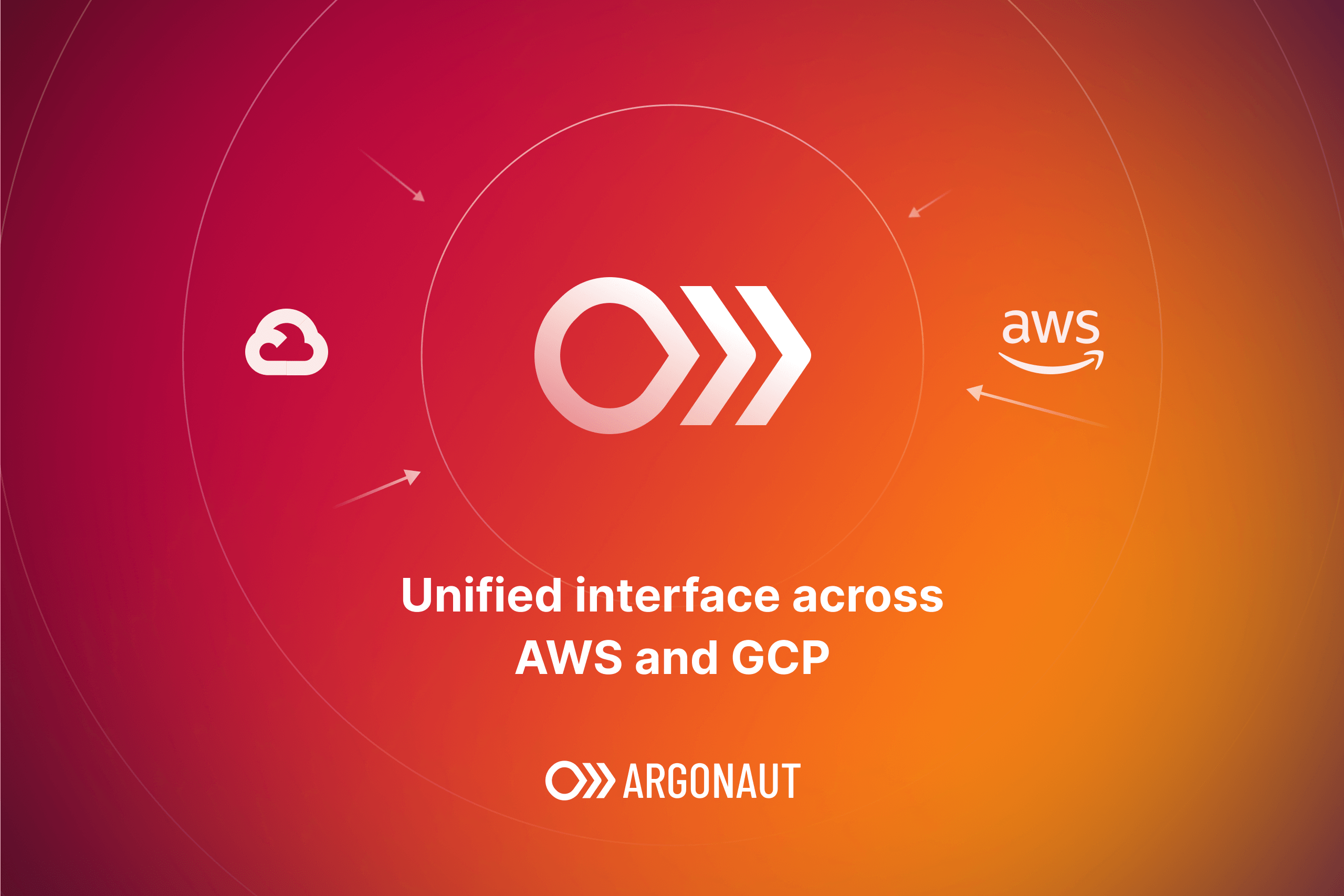Argonaut is a powerful platform that unifies the experience across GCP and AWS clouds. It provides developers, DevOps teams, and Senior leaders visibility across environments and quick access to provision and manage cloud resources, Kubernetes clusters, and configurable GitOps-powered deployment pipelines. In this article, we talk about how Argonaut enables an easy switch between AWS and GCP clouds, saving teams time and effort while gaining an extra $100K in cloud credits.
You may wonder, “Why do I need another tool on top of my cloud provider?”
The answer is simple: to improve deployment efficiency by reducing DevOps overhead.
This layer acts as a standardizing layer that makes it easier for you to follow cloud best-practices while also enabling easy portability between cloud providers for common workloads.
Tools like Argonaut provide the following benefits that have a direct impact on your DORA metrics.
- Unified interface across AWS and GCP clouds
- Manage app and infra from one platform
- Have a fully configurable cloud-agnostic setup
- Best Practices from Day One, automated maintenance
- Provide your developers with self-serve capabilities
- Leverage more cloud services with fewer DevOps engineers
- Make Kubernetes more approachable for your team
Argonaut enables an easy switch - so you get an extra $100K
Engaging with our customers, we found an interesting shift: more than half moved between cloud platforms to take advantage of an extra $100,000 credits from a second provider.
This ability to switch was possible because of the cloud-agnostic architectures our customers automatically get when using Argonaut, which offers a unified interface across AWS and GCP.
Four ways in which Argonaut enables this
- Consistent UX: Our simple-to-use interface takes away the complexities of navigating the many dashboards and tool-specific documentation to set up a functioning deployment pipeline for your Kubernetes environments.
- Cloud Agnostic setup: We provide default architectures that enable cloud portability and cloud-agnostic toolings, such as Terraform, Dagger, Infracost, and ArgoCD. This allows our users to have complete flexibility and GitOps-based workflows whether they choose AWS or GCP cloud.
- Third-party add-ons of your choice: We make it easy for you to add third-party tools such as databases like MongoDB, Observability tools like Datadog, and any other tools of your liking to your clusters, making you less reliant on one cloud provider and enable easy switch. Some of these may be self-hosted if you choose to.
- Deploy across regions and clouds: Argonaut can be the central dashboard for you to interact with all your environments across regions and clouds.
Apart from these advantages, Argonaut users get several other benefits, like automatic Kubernetes version upgrades, efficiency in DevOps, cost visibility, and more! Check out our customer Bytebeam case study.
Our Approach to a cloud agnostic setup
Here is how we achieve a cloud-agnostic setup:
- We build on top of Kubernetes, providing an abstraction layer that automatically manages all the cloud vendor-specific behaviors.
- We automatically manage infra etc., through Gitops and Terraform.
- We've introduced build and deploy pipelines that make it easy to maintain deployments and are completely abstracted from the underlying cloud implementation
Boost your DORA metrics
DORA, or the DevOps Research and Assessment team, has identified four key metrics that help measure the performance of a software development team. These metrics include
- Deployment Frequency, which measures how often successful releases are made to production.
- Lead Time for Changes, which gauges the time it takes for a commit to be put into production.
- Change Failure Rate, which evaluates the percentage of deployments that cause a failure in production.
- Time to Restore Service, which calculates how long it takes to recover from a production failure.
To help teams assess their performance using these metrics, Google Cloud has developed the Four Keys open-source project. This tool sets up a data ingestion pipeline from Github or Gitlab repos through Google Cloud services into Google DataStudio, aggregating data and compiling it into a dashboard for easy tracking. By continuously improving on these metrics, teams can significantly boost their business outcomes. For instance, teams deemed "Elite" by DORA are twice as likely to meet or exceed their performance goals.
Using a tool like Argonaut can have a direct impact on your DORA metrics as it reduces the entire DevOps overhead and gives your team more time to focus on product delivery, improving deployment frequency. And with ArgoCD-based deploy stages, you can ensure consistency across your staging and prod environments. What's more is that the built-in metrics, deployment statuses, alerts, and logs assist in quickly detecting and rectifying issues with your service at the earliest.
Here's how teams are categorized based on their performance in DORA metrics. (Source :Google).

Caveats
However, there are certain scenarios where you may not be able to make an easy switch from AWS to GCP or vice-versa. Some of them are:
- If you're using specific services that do not have equivalents across clouds, like BigQuery, which hasn't an equivalent in AWS
- If you're having high-volume DBs that may require significant downtime for data migration.
- Keep in mind that support characteristics vary across clouds. The support provided by AWS and Azure is generally better than that of GCP.
More useful articles on Cloud Credits
- Free AWS credits
- Free GCP credits
- Guide to Cloud credits
- Comparing AWS, GCP, and Azure startup programs
Getting started
Argonaut is free forever for small teams. If you’d like to give Argonaut a spin, you can get started here. To learn more about the product, check out our documentation. Here are a few use cases of our product based on your role at your company - Developers, DevOps, AI/ML, and C-suite.

